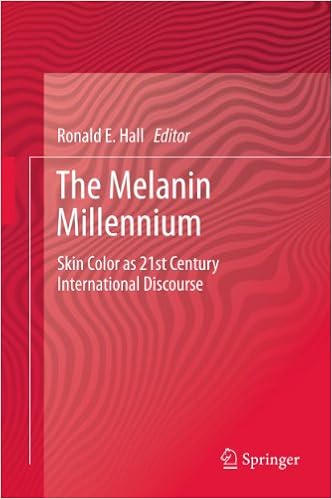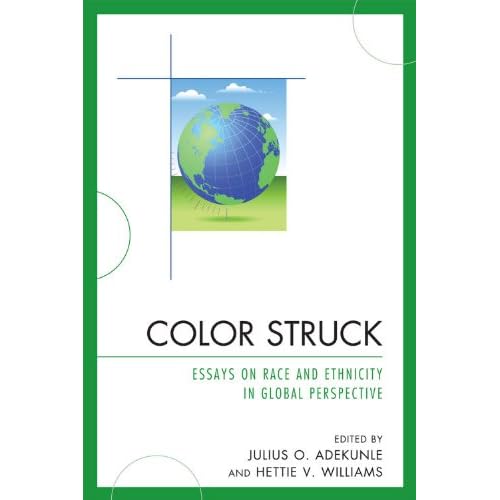Multiracial Americans and Social Class: The Influence of Social Class on Racial Identity
Routledge
2010-04-21
256 pages
Hardback ISBN: 978-0-415-48397-1
Papeback ISBN: 978-0-415-48399-5
E-Book ISBN: 978-0-203-88373-0
Edited by
Kathleen Odell Korgen, Professor of Sociology
William Paterson University

As the racial hierarchy shifts and inequality between Americans widens, it is important to understand the impact of social class on the rapidly growing multiracial population. Multiracial Americans and Social Class is the first book on multiracial Americans to do so and fills a noticeable void in a growing market.
In this book, noted scholars examine the impact of social class on the racial identity of multiracial Americans in highly readable essays from a range of sociological perspectives. In doing so, they answer the following questions: What is the connection between class and race? Do you need to be middle class in order to be an ‘honorary white’? What is the connection between social class and culture? Do you need to ‘look’ White or just ‘act’ White in order to be treated as an ‘honorary white’? Can social class influence racial identity? How does the influence of social class compare across multiracial backgrounds?
Multiracial Americans and Social Class is a key text for undergraduate and postgraduate students, researchers and academics in the fields of Sociology, Race and Ethnic Studies, Race Relations, and Cultural Studies.
Table of Contents
Part 1: Who are Multiracial Americans?
- 1. Multiracial Americans and Social Class, Kathleen Odell Korgen
- 2. In-Between Racial Status, Mobility and Promise of Assimilation: Irish, Italians Yesterday, Latinos and Asians Today, Charles Gallagher
- 3. ‘What’s Class Got to Do with It?’: Images and Discourses on Race and Class in Interracial Relationships, Erica Chito Childs
- 4. Social Class: Racial/Ethnic Identity, and the Psychology of Choice, Peony Fhagen-Smith
- 5. Stability and Change in Racial Identities of Multiracial Adolescents, Ruth Burke and Grace Kao
Part 2: Culture, Class, Racial Identity, and Blame
- 6. Country Clubs and Hip-Hop Thugs: Examining the Role of Social Class and Culture in Shaping Racial Identity, Nikki Khanna
- 7. Language, Power, and the Performance of Race and Class, Benjamin Bailey
- 8. Black and White Movies: Crash between Class and Biracial Identity Portrayals of Black/White Biracial Individuals in Movies, Alicia Edison and George Yancey
- 9. ‘Who is Really to Blame?’ Biracial Perspectives on Inequality in America, Monique E. Marsh
Part 3: Social Class, Demographic, and Cultural Characteristics
- 10. ‘Multiracial Asian Americans’, C. N. Le
- 11. A Group in Flux: Multiracial American Indians and the Social Construction of Race, Carolyn Liebler
- 12. Socioeconomic Status and Hispanic Identification in Part-Hispanic Multiracial Adolescents, Maria L. Castilla and Melissa R. Herman
Part 4: Social Class, Racial Identities, and Racial Hierarchies
- 13. Social Class and Multiracial Groups: What Can We Learn from Large Surveys? Mary E. Campbell
- 14. The One-Drop Rule through a Multiracial Lens: Examining the Roles of Race and Class in Racial Classification of Children of Partially Black Parents, Jenifer Bratter
- 15. It’s Not That Simple: Multiraciality, Models, and Social Hierarchy, Ingrid Dineen-Wimberly and Paul Spickard
Contributors
Benjamin Bailey is an Associate Professor of Communication at the University of Massachusetts-Amherst. His research on the interactional negotiation of ethnic and racial identity in US contexts has appeared in Language in Society, Journal of Linguistic Anthropology and International Migration Review.
Jenifer L. Bratter is an Assistant Professor of Sociology and Associate Director of the Institute for Urban Research at Rice University. Her research focuses on the dynamics of racial intermarriage, marriage and multiracial populations, and has recently been published in Social Forces, Sociological Quarterly, Sociological Forum and Family Relations.
David L. Brunsma is Associate Professor of Sociology and Black Studies at the University of Missouri. He is author or editor of numerous books, including Beyond Black: Biracial Identity in America. His research has appeared in Social Forces, Social Science Quarterly, Sociological Quarterly, and Identity.
Ruth H. Burke is a Graduate Student in Sociology at the University of Pennsylvania. Her research focuses on racial inequality in the United States and racial identification.
Mary E. Campbell is an Assistant Professor of Sociology at the University of Iowa. Her research focuses on racial inequality and identification, and has recently been published in American Sociological Review, Social Problems, Social Science Quarterly and Social Science Research.
Maria Castilla earned her BA in 2009 from Dartmouth College, with high honors in sociology. She currently attends Cardozo School of Law at Yeshiva University.
Erica Chito Childs is an Associate Professor at Hunter College. Her research interests focus on issues of race, black/white couples, gender and sexuality in relationships, families, communities and media/popular culture. Her publications include Navigating Interracial Borders: Black-White Couples and Their Social Worlds (2005) and Fade to Black and White (2009).
Ingrid Dineen-Wimberly is a historian and lecturer at UC Santa Barbara, whose forth-coming book, By the Least Bit of Blood, examines the uplift potential a vocal Black identity provided mixed-raced leaders during the 19th and 20th centuries. Her analysis extends beyond the U.S. to include the function of race in the process of Latin-American nation-making.
Alicia L. Edison is a Graduate Student at the University of North Texas. Her research focuses on race and ethnicity, biracial identity formation, and the perpetuation of racial stereotypes within the media.
Peony Fhagen-Smith is an Assistant Professor of Psychology at Wheaton College in Norton, MA. Her research centers on racial/ethnic identity development across the life-span and has published in Journal of Black Psychology, Journal of Counseling Psychology, Journal of Multicultural Counseling and Development, and The Counseling Psychologist.
Melissa R. Herman, Assistant Professor of Sociology at Dartmouth, studies how identity affects developmental outcomes among multiracial adolescents. Her current research projects examine perceptions of multiracial people and interracial relationships. Her recent work appears in Child Development, Sociology of Education, and Social Psychology Quarterly.
Charles A. Gallagher is Professor and Chair of the Department of Sociology, Social Work and Criminal Justice at La Salle University in Philadelphia. In addition to numerous book chapters, his research on how the media, popular culture and political ideology shapes perceptions of racial and social inequality has been published in Ethnic and Racial Studies, Social Forces and Race, Gender and Class.
Grace Kao is Professor of Sociology and Education at University of Pennsylvania. Her research focuses on race and immigrant differences in educational outcomes. Currently, she serves on the editorial boards of Social Science Research, Social Psychology Quarterly and Social Science Quarterly.
Nikki Khanna is an Assistant Professor of Sociology at the University of Vermont. Her research on racial identity negotiation and gender in group processes has been published in Social Psychology Quarterly, Advances in Group Processes, and The Sociological Quarterly.
C. N. Le is a Senior Lecturer in Sociology and Director of Asian/Asian American Studies at the University of Massachusetts, Amherst. He focuses on racial/ethnic relations, immigration, institutional assimilation among Asian Americans, and public sociology through his Asian-Nation.org website.
Carolyn A. Liebler is an Assistant Professor of Sociology at the University of Minnesota. Her research on indigenous populations, racial identity and the measurement of race has been published in Ethnic and Racial Studies, Social Science Research, and Social Science Quarterly.
Monique E. Marsh is a Graduate Student of Sociology at Temple University. Her research focuses on racial inequality and identification, and has recently been presented at the Eastern Sociological Society Annual Conference and at the National Science Foundation’s GLASS AGEP Research Conference.
Paul Spickard teaches history and Asian American studies at UC Santa Barbara. The author of fourteen books, including Almost All Aliens: Immigration, Race, and Colonialism in American History and Identity. He is currently studying race in Hawaii and in Germany.
George A. Yancey is a Professor of Sociology at the University of North Texas. His work has focused on interracial families and multiracial churches. His latest book is Interracial Families: Current Concepts and Controversies.




